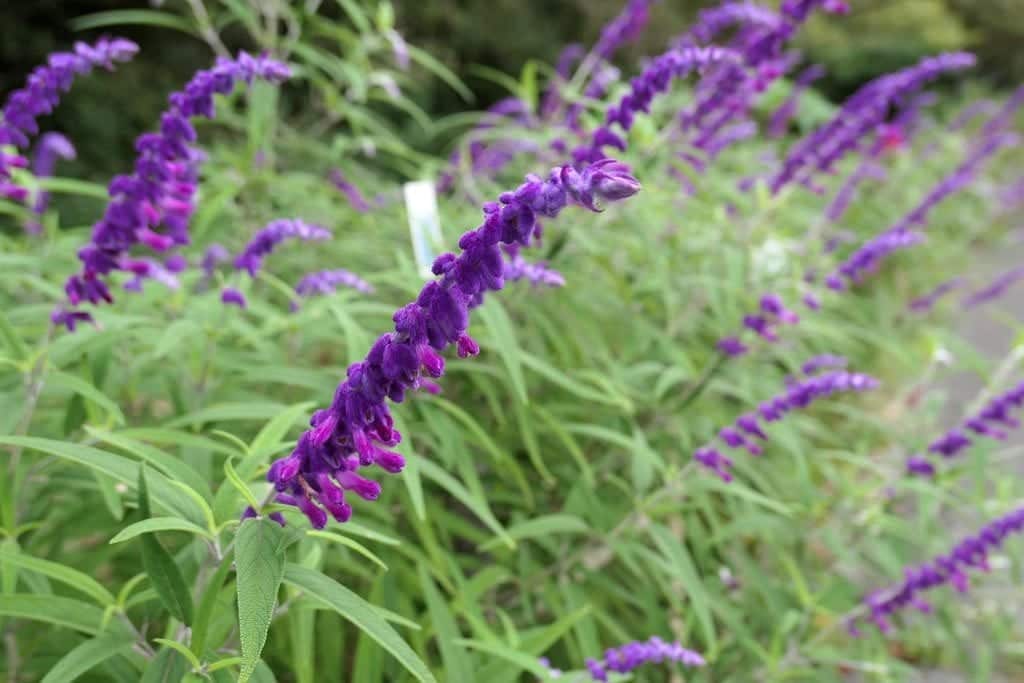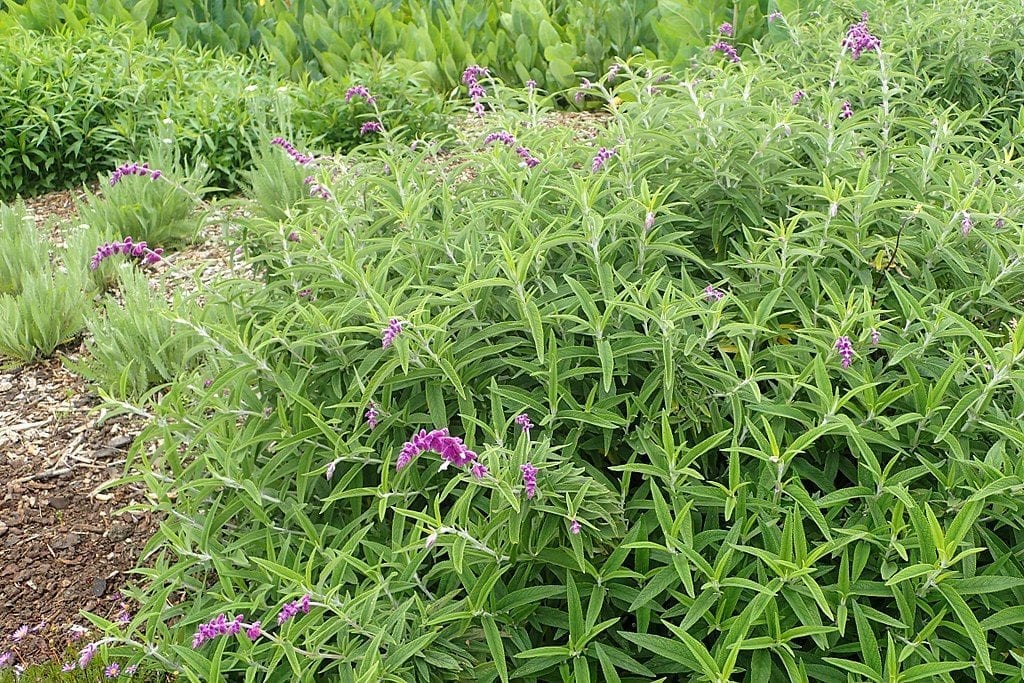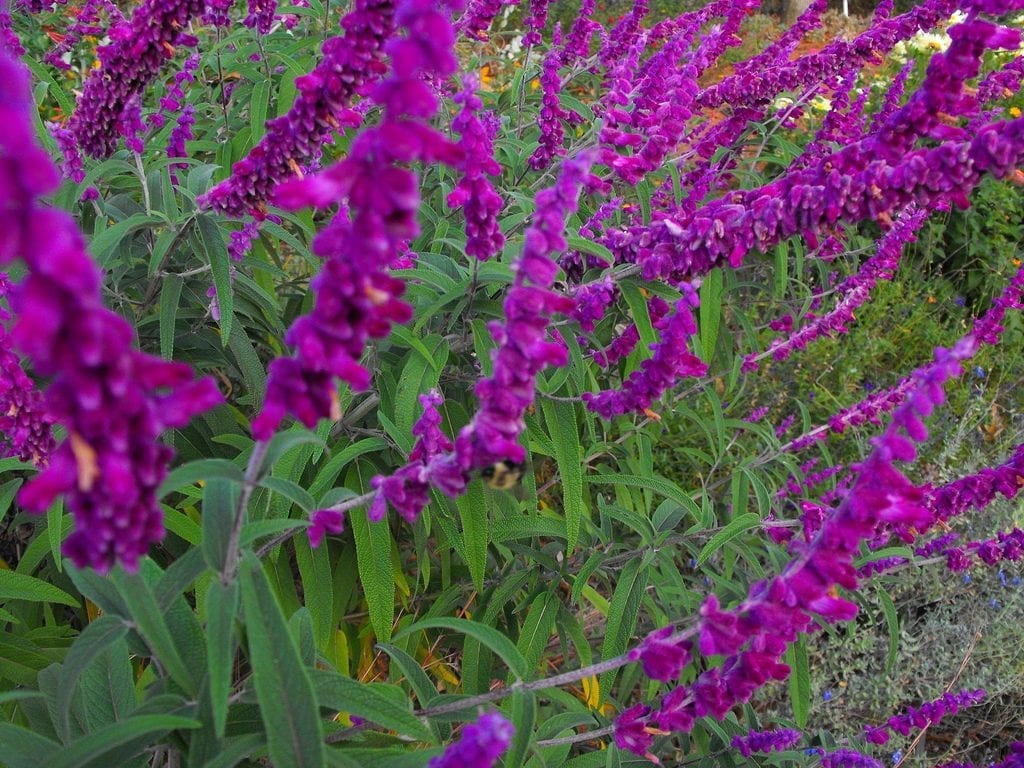
Image - Flickr / Greg Peterson
The plant whose scientific name is Sage leucantha it is very interesting, even more than other species of the same genus. And it is that its wonderful flowers are covered by a very short white hair-type wool.
It grows at a good pace, and it is also the ideal size for cultivation both in small gardens and, of course, in pots. Stay with me to get to know her thoroughly 🙂.
Origin and characteristics

Image - Wikimedia / Krzysztof Ziarnek, Kenraiz
Our protagonist is an evergreen aromatic shrub whose scientific name is Sage leucanthaAlthough you may know it better by its common names: cordoncillo, salvia cruz or milkweed. He is originally from Mexico, and reaches a maximum height of 1 meter. The leaves are lanceolate, opposite, velvety and dark grayish green.
Blooms between the months of fall and early winter, and you can do it again from late spring to early summer. The flowers are tubular, blue and white, or purple and white, and they tend to lean from weight.
Uses
In its place of origin, a tea is prepared with milkweed leaves mixed with Foeniculum vulgare (fennel) or Cinnamomum zeylanicum (cinnamon) to relieve symptoms such as cough or chest pain.
What are their cares?

Image - Flickr / Ernest James
If you want to have this precious plant in your garden or patio, provide it with the following care ... and enjoy 🙂:
- Location: it must be outside, in full sun or in partial shade.
- Earth:
- Pot: universal growing substrate.
- Garden: grows in soils rich in organic matter, well drained.
- Irrigation: frequent. It has to be watered 3-5 times a week in summer, and every 4-5 days the rest of the seasons.
- Subscriber: in spring and summer with liquid guano (you can get it here) if it is potted, or with compost if it is in the garden.
- Multiplication: by seeds in late winter and cuttings in spring.
- Pruning: branches that are broken or weak, as well as withered flowers, must be removed.
- Rusticity: it resists weak and occasional frosts of up to -2ºC, but it is preferable that it does not drop below 5ºC.
Did you know the Sage leucantha?